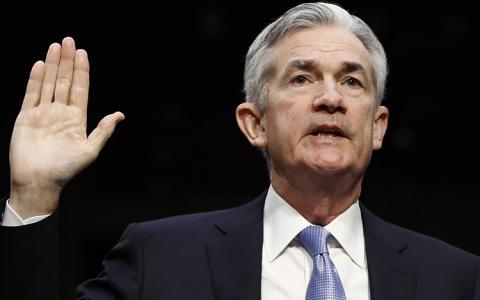
The whiff of inflation ruining Jerome Powell’s February is bringing to a head a risk that still traumatizes Asia.
Eight years on, the 2013 Federal Reserve “taper tantrum” still rankles policymakers and investors alike in this part of the world. That was back when the Fed was hinting at just trimming the amount of debt it was purchasing. Markets quaked from Brazil to India to Indonesia to South Africa to Turkey, sending near contagion-level turmoil around the globe.
Enter Fed Chairman Powell, who’s suddenly getting an earful from bond traders worried inflation is about to surge—and hankering for another dose of tapering. And now, from globally respected peers like Larry Summers, the former U.S. Treasury secretary and a man often-mentioned as a Fed chief candidate.
Powell is not overly concerned consumer prices are about to skyrocket. He’s of the view that that economic trauma from Covid-19 fallout—including the highest jobless rates in decades—will cap inflationary pressures. Powell, for example, says the official 6.3% unemployment rate is probably closer to 10%. As such, he argues, consumer prices rising at a roughly 1.4% rate, as they are now, isn’t reason for panic.
Not so, counters Summers. He worries the magnitude of U.S. stimulus—and another $1.9 trillion likely to come—is tempting economic fate. As Summers wrote in the Washington Post recently: “We must make sure that it is enacted in a way that neither threatens future inflation and financial stability nor our ability to build back better through public investment.”
All that fresh stimulus, Summers worries, will lead to overheating and force the Fed not just to taper, 2013-style, but perhaps hike rates in highly disruptive ways.
Will Denyer at Gavekal Research notes “that at this stage in the recovery, another large fiscal stimulus package risks pushing inflation to levels the Fed may not be comfortable with.” Bottom line, he says, “with falling joblessness threatening to push up labor costs, fear of overheating could force the Fed to adjust its current dovish guidance, with all that implies for yields.”
For Asia, that implied a rough 2021 should yields in this region follow U.S. borrowing costs higher. In 2020 alone, Covid-19 recovery efforts saw governments around the globe borrow some $19.5 trillion to finance stimulus efforts, according to the Institute of International Finance.
And the Fed, the most powerful monetary force, grew its balance sheet by roughly $3 trillion last year. That means that in just 12 months, the Fed added as much monetary stimulus as it had in the decade after the 2008 Lehman Brothers crisis.
Hence concerns inflation is about to roar back. Economist Robin Brooks warns that “tantrum risk is elevated,” creating “fertile ground” for bond market selloffs. “This could happen again mid-2021 once the economy reopens thanks to wide-spread vaccinations,” he says, singing a hymn similar to Summers.
The good news for Asia, though, is that Powell’s don’t-panic-about-inflation take is likely to be proven correct. What worries Summers, in a nutshell, is how President Joe Biden’s coming spending jolt might throw the “output gap” out of whack. This is the difference between the level of output and an economy’s growth potential.
But I’m with Nobel laureate Paul Krugman, who argued Biden’s plan isn’t stimulus. It’s a rescue effort, which changes the price dynamics in unpredictable ways. “Think of it as disaster relief or like fighting a war,” says the City University of New York professor Krugman. “When Pearl Harbor gets attacked, you don’t say, ‘How big is the output gap?’”
There’s some hyperbole at play here. But the lesson from Japan, whose plight Krugman has studied for decades, is that you can’t apply conventional tools to a wildly unconventional crisis. The coronavirus shock is a once-in-a-century health shock layered atop a devastating trade war, on top a global financial system still recovering from the earlier 2008 global crisis.
The pandemic, in other words, found the U.S., Europe, Japan, China and other developing nations across Asia with serious pre-existing conditions and exploited them ruthlessly. All this means the odds favor deflation—or just disinflation—more than an old-school jump in inflationary pressures. Pricing power is simply not a thing many companies enjoy in 2021.
The biggest lesson from Japan is the need to go very big. After deflation became deeply ingrained in the late 1990s, Japan unleashed countless dozens of public stimulus packages. Small at first, and larger over time. Because Tokyo took too long to get serious, deflation remains a feature even today. Yoshihide Suge is the tenth consecutive Japanese prime minister to try his hand at normalizing Japan’s post-crash pricing environment.
Now, thanks to Covid-19, consumer prices are again grinding lower. In December alone, they fell 1% from a year earlier, the biggest drop in 10 years. That, months after Japan’s government pumped another $2.2 trillion into the economy.
It’s not too late for the U.S. to avoid so-called “Japanification.” The best way is to go big with stimulus. And to leave the conventional thinking at the door.
This article originally appeared on Forbes.



